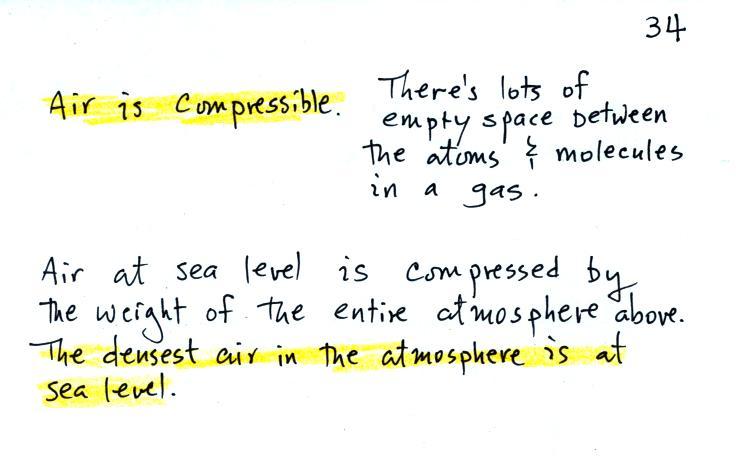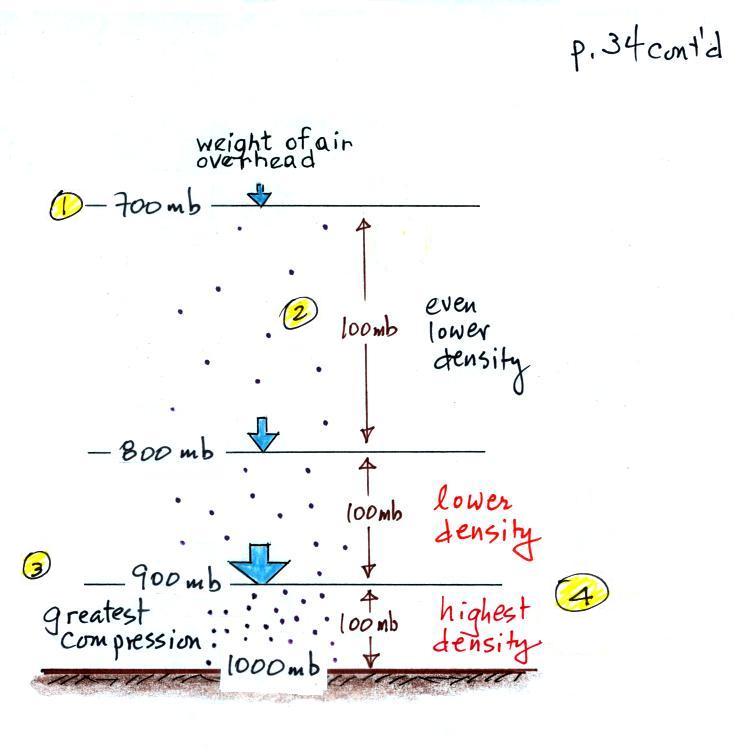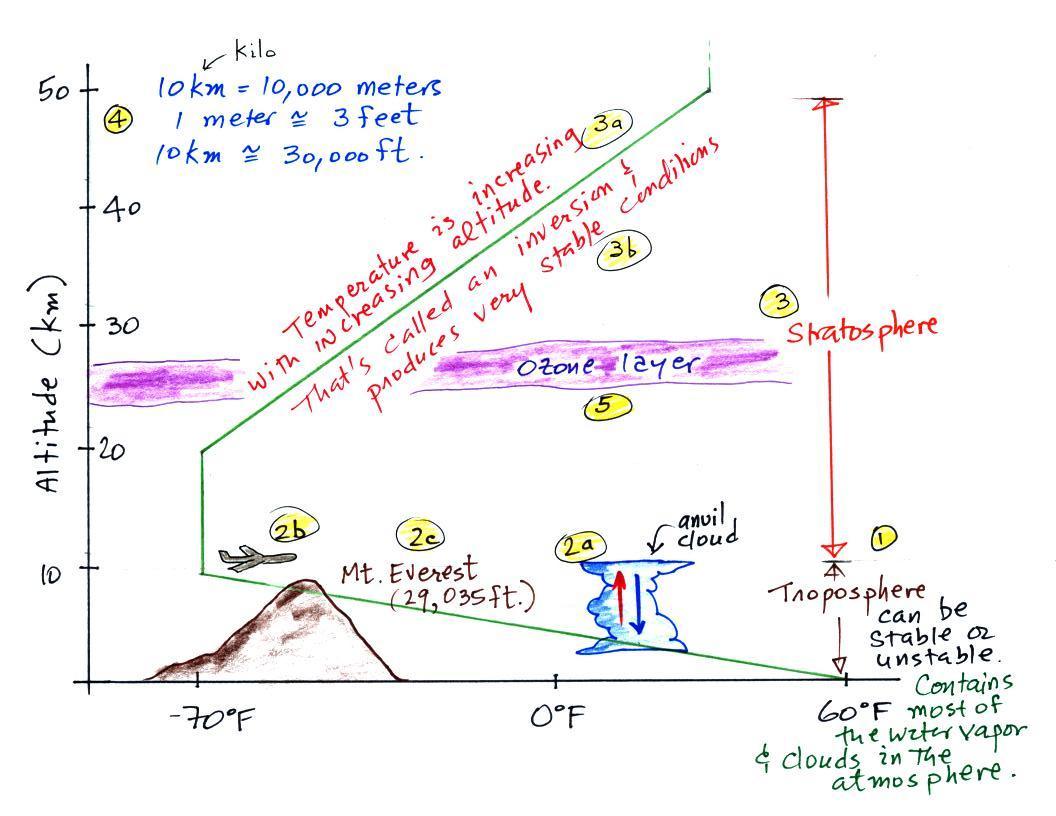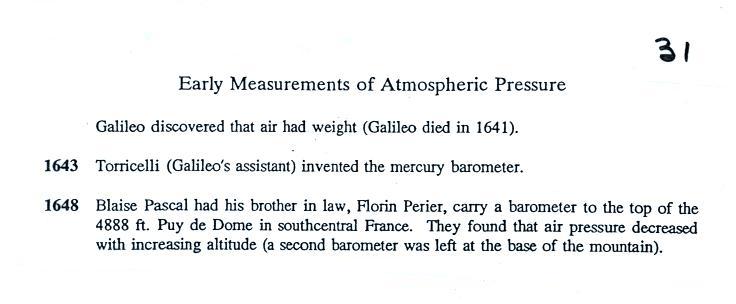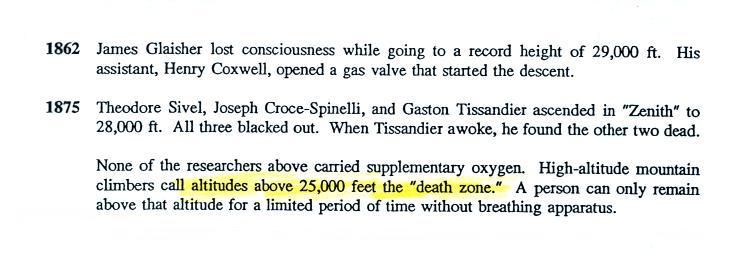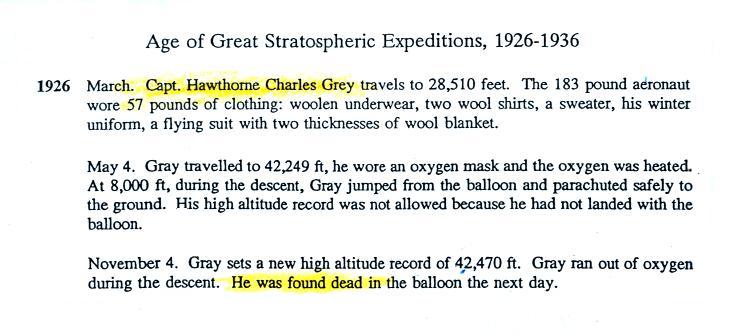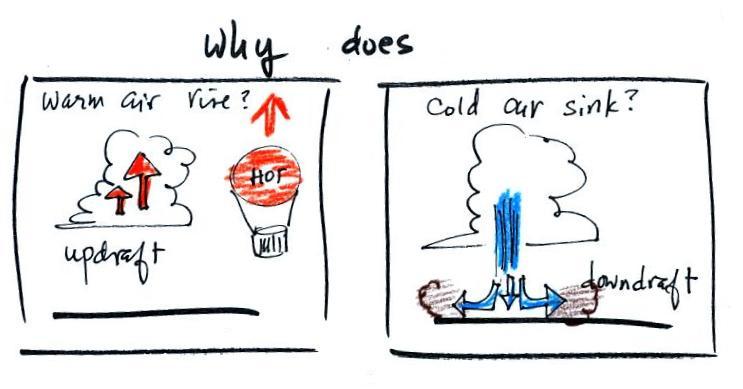Mon., Sep. 10, 2012
click here to
download a more printer friendly version of today's notes.
A couple of songs from one of my favorite local groups:
Calexico. I played "Quattro
(World Drifts In)" and most of "Alone Again
Or". You'll need to come to the T Th 8 am class tomorrow if
you want to hear "Ballad
of
Cable
Hogue".
The first set of 1S1P reports was collected today. It
usually takes some time to get all of these graded. I will try
not to make a new assignment until you get at least one of your reports
back.
The first Optional Assignment is due at the start of class on
Friday. There's a good chance that there will be an In-class
Optional Assignment Wednesday or Friday this week.
Today was the "last call" for Expt. #1. If you didn't pick
up materials you'll need to try to do Expt. #2 or Expt #3.
We've spent the last couple of classes looking at air pressure and
how it changes with altitude. Today we'll consider air density
and air temperature.
How does air density change with
increasing altitude? You should know the answer to that
question. You get out of breathe more
easily at high altitude than at sea level. Air gets
thinner (less dense) at higher altitude. A lungful of air at high
altitude just doesn't contain as much oxygen as at lower altitude or at
sea level.
Because air is compressible, a stack of mattresses might be a more
realistic representation of layers of air than a pile of bricks.
Four mattresses are stacked on top of each
other. Mattresses
are reasonably heavy, the mattress at the
bottom of the
pile is compressed by the weight of the three mattresses
above. This is shown at right. The mattresses higher up
aren't squished as much because
their
is less weight remaining above. The same is true with layers of
air in the atmosphere.
The statement above is at the top of p. 34 in the photocopied
ClassNotes. I've redrawn the figure found at the bottom of p. 34
below.
There's a lot of information in
this figure and it is worth
spending a minute or two looking at it and thinking about it.
1. You can first notice and remember that pressure
decreases
with increasing altitude. 1000 mb at the bottom decreases to 700
mb at the top of the picture. You should be able to explain why
this happens.
2. Each layer of air contain the same amount (mass) of
air.
This is a fairly subtle point. You can tell because the pressure
drops by 100 mb as you move upward through each layer.
Pressure depends on weight. So
if all the pressure changes are equal, the
weights of each of the layers must be the same. Each of the
layers
must contain the same amount (mass) of air (each layer contains
10% of the air in
the atmosphere).
3. The densest air is found at the bottom of the picture.
The bottom layer is compressed the most because it is
supporting the weight of all of the rest of the atmosphere. It is
the
thinnest layer in the picture and the layer with the smallest
volume. Since each
layer has the same amount of air
(same mass) and the bottom layer has
the
smallest volume it must have the highest density. The top layer
has the same amount of air
but about twice the volume. It therefore has a lower density
(half the density of the air at sea level). Density is decreasing
with increasing altitude.
4. Finally pressure is decreasing most rapidly with increasing
altitude in the densest air in the bottom layer. This is
something we covered just before the Practice Quiz last
Wednesday.
What happens to air temperature
with increasing altitude. Again our personal experience is that
it decrreases with increasing altitude. It is colder at the top
of Mt. Lemmon than it is here in the Tucson valley.
That is true up to an altitude of about 10 km (about 30,000
ft.). People were very surprised in the early 1900s when they
used balloons to carry instruments above 10 km and found that
temperature stopped decreased and even began to increase with
increasing altitude.
The figures below are more clearly drawn versions of
what was done in class.
The atmosphere can be split
into layers
depending on whether
temperature is increasing or decreasing with increasing altitude.
The two lowest layers are shown in the figure above. There are
additional layers (the mesosphere and the thermosphere) above 50 km but
we won't worry about them in this class.
1. We live in
the troposphere. The troposphere is found, on average, between 0
and about 10 km altitude, and is where temperature usually decreases
with
increasing altitude. [the troposphere is usually a little higher
in the tropics and lower at polar latitudes]
The troposphere contains most of the water vapor
in the atmosphere (the water vapor comes from evaporation of ocean
water and then gets mixed throughout the troposphere by up and down air
motions) and is
where most of the clouds and weather occurs. The
troposphere can be stable or unstable (tropo means "to turn over" and
refers to the fact that air can move up and down in the
troposphere).
2a. The thunderstorm shown in
the figure with its strong updrafts and downdrafts indicates unstable
conditions. When the thunderstorm reaches the
top of the troposphere, it runs into the bottom of the
stratosphere which is a very stable layer. The
air can't continue to rise into the stratosphere so the cloud
flattens out and forms an anvil (anvil is the name given to the flat
top of the thunderstorm). The
flat anvil top is something
that you can go outside and see and often marks the top of the
troposphere.
2b. The summit of Mt. Everest is a little over 29,000
ft. tall and is
close to the average height of the top of the troposphere.
2c. Cruising altitude in a passenger jet is usually between
30,000 and 40,000, near or just above the top of the troposphere, and
at the bottom of the stratosphere. The next time you're in an
airplane try to look up at the sky above. There's less air and
less scattering of light. As a result the sky is a darker
blue. If you got high enough the sky would eventually become
black.
3. Temperature remains constant between 10 and 20 km
and then
increases with increasing altitude between 20 and 50 km. These
two sections form the stratosphere. The stratosphere is a
very stable air layer. Increasing temperature with increasing
altitude is called an
inversion. This is what makes the stratosphere so stable.
4. A kilometer is one
thousand meters. Since 1 meter is about 3 feet, 10 km is about
30,000 feet. There are 5280 feet in a mile so this is about 6
miles (about
is usually close enough in this class).
5. The ozone layer is found in the
stratosphere. Peak ozone concentrations occur near 25 km altitude.
Here's the same picture drawn again (for clarity) with some
additional information. We need to explain why when temperature
decreases all the way up to the top of the troposphere, it can start
increasing again in the stratosphere.
6. Sunlight is a mixture of ultraviolet (7%),
visible (44%, colored green in the picture above) and
infrared light (49%, colored red). We can see the visible light.
6a. On average about 50% of the sunlight
arriving at the top of
the atmosphere passes through the atmosphere and is absorbed at the
ground (20% is absorbed by gases in the air, 30% is reflected back into
space). This warms the ground. The air in contact with the
ground is warmer than air just above. As you get further and
further from the warm ground,
the
air
is
colder
and
colder.
This
explains
why
air
temperature
decreases
with
increasing
altitude
in
the
troposphere.
5b. How do you explain increasing temperature with
increasing
altitude in the stratosphere?
Absorption
of
ultraviolet light by ozone warms the air in the stratosphere and
explains why the air can warm (oxygen also absorbs UV light). The
air in the stratosphere is
much less dense (thinner) than in the troposphere. So even though
there is not very much UV light in sunlight, it doesn't
take as much energy to warm this thin air as it would to warm denser
air closer to the ground.
7. That's a manned
balloon;
Auguste Piccard and Paul Kipfer are
inside. They were the first men to travel into the
stratosphere (see pps 31 & 32 in
the photocopied Class Notes). It really was
quite a daring trip at the time at the
time,
and they very
nearly didn't survive it. More about this in the next section.
Pages 31 and 32 in the ClassNotes list some of the significant
events in the early study and exploration of the atmosphere. A
few of them are included below.
Galileo's
experiment that proved that air had weight was mentioned earlier in
the online notes. The mercury barometer was invented in 1643.
The earliest balloon trips into the upper atmosphere were in
unheated and unpressurized gondolas. Climbers have made it to the
summit of Mt. Everest without carrying supplementary oxygen but it is
difficult and requires acclimation. Read "Into Thin Air"
by Jon Krakauer if you'd like to get some idea of what it's like trying
to climb Mt. Everest.
Measurements of air temperature at high altitude in unmanned
balloons lead to the discovery of the stratosphere in about 1900.
Capt. Grey was mentioned early in the video segment shown in
class. Note the clothing he had to wear to try to stay
warm. All of his trips were in an unpressurized open
gondola.
This flight lead by Auguste Piccard
was the subject of the video segment shown in class (from a PBS program
called The Adventurers).
Jacques Piccard,
Auguste's
son,
was
in
the
video.
He
would later travel with Lt.
Don Walsh of the US Navy to a depth of about 35,800 feet in the ocean
in the Mariana Trench.
Bertrand Piccard,
Jacques
son
was
part
of
the
first
two man team to circle the globe
non-stop in a balloon.
Coming on Wednesday. We'll spend a big part of the period
trying to answer the following question.


